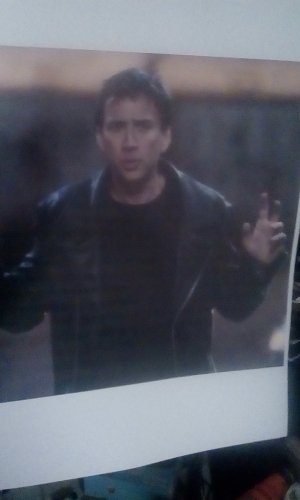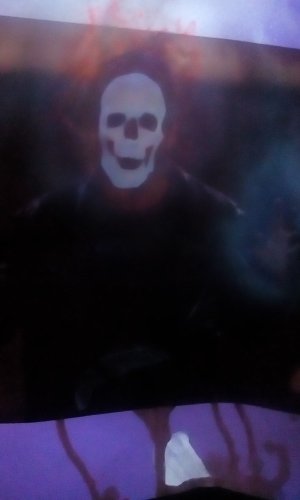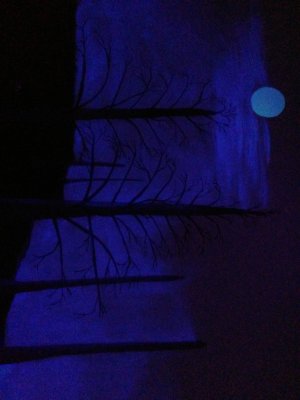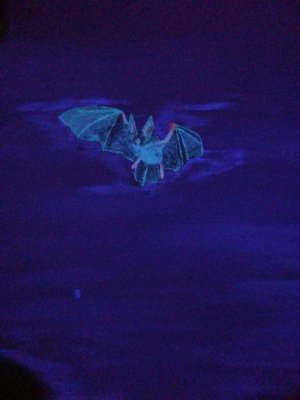Robbyrockett2
Air-Valve Autobot!
So , I don't have a ton to contribute to the forum as an airbrushing newbie but this one odd area I've got some experience with that might be useful to someone else here.
What are Invisible blacklight paints:
Invisible blacklight paints are just either clear or white under normal lighting but react and show color under blacklight (UV).
Thinning:
Nearly all are water based acrylics or water based urethanes and can be thinned with just water
or whatever you would use on another water based paint. None are very thick to begin with
, the higher the quality the thinnner they are to begin with. (UV pigments dont thicken the paint much and are incredibly expensive, the thicker the paint the less vibrant it will be)
No matter which paint it is plan on doing two to three coats when spraying to get solid coverage.
Colors:
They are available in white, red, yellow, green, blue, purple, orange and black...Yes black!
Black makes it possible to create a change in the image under UV
Mixing colors:
Mixing with normal paint
Both white and clear versions of these paints can be tinted with normal paint colors, in this situation the white versions blacklight color is hardly affected by the color of the tint, so you can have a yellow spot that glows white or a light green spot that glows red in UV. The clear versions will be affected by the color it is mixed with but you still have some variation, for example you could have a solid red area that turns into . a light pinkish purple. In either case mixing will dull the glow. Sometimes that is desired as you can make it so you can see the color but it doesnt really appear to glow.
Mixing with other invisibles
Invisibles can be intermixed to get other colors however its is an additive effect not subtractive like normal paint. For example mixing any color with white will just get you white since white is already a combination of all colors. It mixes the way actual colored light mixes.
For some reason orange, as made by the manufacturers is a very very dull glow but mixing yellow and red is a bright orange.
Brand specifics.....
Quality and attributes between brands varies greatly. Here is where I can give the biggest pointers aside from lighting tips. To be continued in my next post........
What are Invisible blacklight paints:
Invisible blacklight paints are just either clear or white under normal lighting but react and show color under blacklight (UV).
Thinning:
Nearly all are water based acrylics or water based urethanes and can be thinned with just water
or whatever you would use on another water based paint. None are very thick to begin with
, the higher the quality the thinnner they are to begin with. (UV pigments dont thicken the paint much and are incredibly expensive, the thicker the paint the less vibrant it will be)
No matter which paint it is plan on doing two to three coats when spraying to get solid coverage.
Colors:
They are available in white, red, yellow, green, blue, purple, orange and black...Yes black!
Black makes it possible to create a change in the image under UV
Mixing colors:
Mixing with normal paint
Both white and clear versions of these paints can be tinted with normal paint colors, in this situation the white versions blacklight color is hardly affected by the color of the tint, so you can have a yellow spot that glows white or a light green spot that glows red in UV. The clear versions will be affected by the color it is mixed with but you still have some variation, for example you could have a solid red area that turns into . a light pinkish purple. In either case mixing will dull the glow. Sometimes that is desired as you can make it so you can see the color but it doesnt really appear to glow.
Mixing with other invisibles
Invisibles can be intermixed to get other colors however its is an additive effect not subtractive like normal paint. For example mixing any color with white will just get you white since white is already a combination of all colors. It mixes the way actual colored light mixes.
For some reason orange, as made by the manufacturers is a very very dull glow but mixing yellow and red is a bright orange.
Brand specifics.....
Quality and attributes between brands varies greatly. Here is where I can give the biggest pointers aside from lighting tips. To be continued in my next post........






